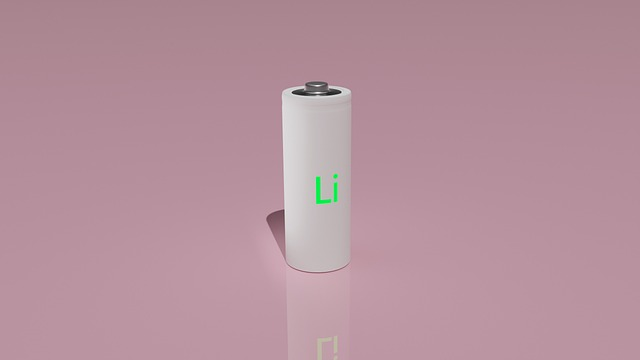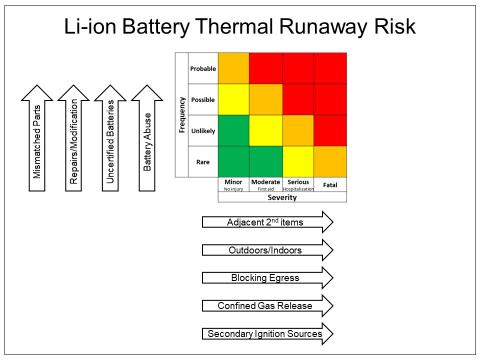Micromobility is here to stay, and it’s changing how we experience urban life for the better. With Unagi’s membership program, you can enjoy all the benefits of a top-tier electric scooter without the sky-high price of ownership or the inconvenience of ride-sharing.
Alarming News
You may have heard unsettling news about lithium ion battery powered vehicles in the past few years.
Electric scooters and e bikes with rechargeable lithium ion batteries have started an increasing number of fires and explosions in densely populated areas in the U.S., UK, India, Australia, and other places in the world.
Vehicles have either caught fire or exploded, causing injury, property loss and loss of human life. Reputable sources around the world have reported alarming upticks in electric vehicle battery fire statistics.
We've seen companies like Lime pull thousands of scooters from operation because of the threat of fire in their warehouses.
Authorities in major cities have reported a serious rise in the number of battery fires caused by electric vehicles in apartment buildings.
New York City firefighters reported a fourfold increase in such fires between 2020 and 2022.
These stories are often tragic, and they cast doubt on the safety of lithium-ion powered vehicles like electric scooters.

Rise in Electric Scooter Adoption
News coverage of electric vehicles catching fire, however, often omits crucial context about the danger from battery fires.
One reason electric scooter fires seem to have risen so sharply is that the adoption of all electric two wheeled vehicles has risen even more sharply.
The rapid increase of two wheeled electric vehicles on the road shows little sign of slowing in coming years and has even eclipsed the adoption of electric cars.
In North America alone, usage of shared electric scooters rose 50% between 2020 and 2022, a figure that does not account for the rise of privately owned scooters.
2018 research found electric scooter adoption worldwide growing at an "unprecedented pace."
Five years later, despite the slowdowns and losses of COVID-19, the electric scooter market has shown not only remarkable resilience, but also continued growth each year.
Several analysts have forecast that in 2023 electric scooters will make up 8% of all two-wheeled vehicles on the road.

Are Electric Scooters Dangerous?
Despite the supposed risks, more and more people are choosing electric scooters as their primary means of transportation.
But are electric scooters as risky as some battery fire statistics might suggest?
Reliable numbers about fires caused solely by electric scooters are hard to find.
Electric bikes and scooters are usually lumped together in the same category, and little if any attempt is made to separate fires caused by shared vs. privately owned vehicles. These differences, however, are significant.
More battery fires can be a tragic outcome of the mass adoption of two wheeled electric vehicles, at a time when more people are using those vehicles for commuting and delivery. However, the vast majority of lithium ion battery fires are preventable.
Rare instances of thermal runaway – when overheated battery cells catch fire or explode – are most often the result of a failure to follow manufacturers instructions or a vehicle that does not meet basic safety standards.
Fires are caused by swapping chargers or batteries between vehicles, or charging or storing scooters with battery cells that have incurred physical damage, practices that usually occur in small-to-large fleets of delivery or shared vehicles that are used daily by different drivers.
Battery fires are not inherently a problem with the design of electric scooters powered by lithium ion batteries.

Lithium ion Battery Fire Prevention
Given the enormous increase in the use of electric scooters around the world, it’s maybe not that shocking that injuries and accidents are also on the rise. But we get very little information about what specifically caused the fire when we read news reports.
There are critical ways to prevent battery fires, and these involve both the manufacturer and the end user. Better understanding of battery fire prevention will help make electric scooters safer for everyone.
We are not going to roll back to a time before electric scooters and e bikes. These transportation solutions have become too important in the shift away from fossil fuels.
Companies need to understand their role in making products safer, and buyers need to understand the risks posed by electric vehicles.
E scooters are safer when riders are better informed about their dangers.

What Causes Battery Fires? A Brief Overview
Lithium ion battery fires typically happen because of a buildup of heat in the battery caused by overcharging, damage to the battery, overheating from external sources, or a short circuit that causes individual battery cells to fail.
The cause of most e scooter related fires is thermal runaway, a heat build-up that can happen under a number of preventable circumstances, including:
- Poorly made battery cells failing. Like all batteries, lithium ion batteries use a mixture of chemicals to store energy. Unlike most lead-acid batteries, however, a large Li-ion battery is made up of several individual lithium ion cells joined together in a pack. If one or more of these cells fail, it can cause a cascade reaction in which chemicals build up inside the battery and ignite. Reputable companies will source high quality e scooter batteries, but cheap imitators often cut corners here.
- Damaged or modified batteries. Damaged batteries are a significant cause of thermal runaway. If the battery has any swelling or leakage or makes any noise, it should be replaced immediately.
- Batteries exposed to excess heat from sun/other sources. Store scooters (and all electronic devices) in cool, shady environments.
- Wrong charger used with battery. Never swap chargers between batteries (even if they fit!). Using the wrong charger is a significant cause of thermal runaway.
- Wrong battery used in electric scooter/bike. Never swap batteries between vehicles (even if they fit!)

The Battery Management System: How Scooter Manufacturers Prevent Fires
E scooter technology has been steadily improving ever since lithium ion batteries became a viable source of energy for moving human beings. The result is that electric scooters are becoming more appealing to the average commuter.
Unfortunately, this also means there are an increasing number of companies making inferior products and cashing in by imitating reputable brands.
Many companies cheap out on major components in the electrical system, causing their scooters to fail early, or in worst case scenarios to catch fire or even explode.
One cause of fire in cheap electric scooters can be a faulty battery management system.
The battery management system (BMS) regulates the voltage going in and coming out of an electric scooter’s battery. The system shuts an electric scooter down before its battery discharges completely. This reduces stress on the battery and prolongs its life.
The BMS also – ideally – prevents the battery overcharging, a significant cause of thermal runaway. However, if an electric scooter’s battery management system is ineffective, a scooter left charging overnight or unattended can become a fire hazard.
A reliable battery management system will shut the scooter down if the battery overheats, whether due to endothermic reactions (heat build up from the inside) or exothermic sources (an overheated storage environment; the sun).
Shutdown should happen before a large lithium ion battery reaches temperatures hot enough to start a chemical fire or explosion.
While it’s hardly the most glamorous part of any electric vehicle, the BMS is definitely one of its most critical safety components.

Best Battery Storage and Charging Practices: How Users Can Prevent Fires
The battery management system operates when an electric scooter is powered up. But scooter battery fires can also start when a scooter is completely shut down and unplugged due to overheating.
For this reason, you should always store an electric scooter in a climate controlled area and never expose it to direct sunlight for extended periods of time.
There are effective charging practices that can prolong the life of your e scooter's battery and keep the battery cells from getting routinely stressed and subject to failure.
Good charging practices are effective for prolonging the battery life of any lithium ion powered device. But when it comes to devices the size of an electric scooter, protecting the battery from inordinate stress from full discharging or overcharging also makes the battery far less prone to thermal runaway.
Do NOT Ride or Charge an Electric Scooter with a Damaged Battery Pack or Charger
A punctured, dented, ruptured, or otherwise damaged battery or battery casing should raise a huge red flag that something is seriously wrong and the battery needs replacement.
Unfortunately, shared scooters are subject to physical damage since they are treated roughly by some riders or not handled carefully by workers.
Shared scooters are also more frequently subject to high temperatures, leading to increasing incidents of combustion.
A rise in fire statistics among shared scooters, especially in storage warehouses or small city spaces filled with vehicles, has caused the cited battery fire statistics to go up overall.
ALWAYS Use the Correct Charger for the Scooter Make and Model
Electric scooter manufacturers can design chargers and charging ports that look remarkably similar and may even be interchangeable, but this does NOT mean they should ever be interchanged.
Use of incorrect chargers is a major cause of e scooter fires. This warning also applies to purchasing a replacement charger.
An e scooter battery is designed with specific voltage requirements, and you should always follow manufacturers instructions for best charging practices. These include always using the correct charger.
Charge Scooters Away From Flammable or Explosive Objects
This may seem like common sense, but charging an electric scooter next to a pile of laundry or near propane tanks or other flammable or explosive objects can be particularly hazardous.
If a fire does start, it can get out of control if it spreads quickly. Charge electric two wheelers away from each other to minimize the potential of a chain reaction (when heat spreads from one battery to other batteries nearby and causes more fires).
As with any common house fire risks, it's important to practice good prevention. it's also important to know what to do if a fire results.
The best method for extinguishing fires caused by lithium ion batteries has shown to be a household fire extinguisher, and you should already have on hand for grease fires or electrical fires.
Other tips can also save lives in the rare event of thermal runaway: like charging your scooter away from exit doors, especially the front door, and never charging a scooter overnight or unattended. This last one might be hard to avoid, but nonetheless, it can reduce the risks of thermal runaway and related fires.
While they might seem to work the same way as other devices powered by lithium batteries like phones, laptops, and tablets, electric scooters use batteries with much higher voltage and storage capacity. Their battery chemistry is more subject to exothermic reactions, when heat builds up and gets released outside the battery as flames or explosions.

Conclusion
Electric scooter battery fires may be on the rise, and they may be rising sharply in high density cities like New York. But this does not mean that electric scooters are inherently unsafe. Even when reputable sources report on the rise in battery fires, we must as critical questions about what lead to those fires.
Electric scooter and e bike battery fires are largely preventable or can be stopped before they spread out of control by the use of good charging and storage practices.
Regulation might eventually weed out unscrupulous manufacturers of lower quality electric scooters that use substandard parts. Until then, it's up to the consumer to exercise good judgment and only buy trusted brands that use high quality parts in their construction, including high quality lithium ion batteries.

Stay current with the latest U.S. electric scooter laws in our 2025 guide. Updated annually since our first comprehensive guide, ensuring you have the most recent state and city regulations to ride responsibly”

The Slack Core 920R is currently the fastest electric scooter in 2025 that you can purchase without the need for pre-order.

Our selection of the best electric scooters 2025 spans the fastest e-scooters to the most portable ones, the ones designed for city riding and off-road, the best scooters for rain, budget electric scooters for students, and more powerful ones for skilled riders.

The Unagi Voyager is the best lightweight electric scooter for adults and teenagers. It is the ultraportable sequel to its predecessor, the Unagi Model One Classic.

If you're wondering whether an electric scooter with a seat is right for you, this is a detailed article that would suit your need.

Understand which personal electric vehicle is best, the choice between an electric bike or electric scooter might already be made for you by some critical factors, including portability and storage capacity.

In the U.S., most states don't require a license. For those that do, they usually just ask for a regular driver's license or a learner's permit.

Yes, you can bring an electric scooter on a plane, but it needs to have a lithium battery smaller than 100 watt-hours, which most don't.

Manufacturers advise against riding electric scooters in the rain. The main reasons are: water can fry the electronics, make the ride dangerous, and void your warranty.

The basis and the premise of my work is that we either operate out of love or we operate out of fear...Time is currency. The coolest thing about the scooters is that it's really quick, and it goes uphill. From there, traveling more efficiently and having a good time doing it--I think that's the most important thing.

Cynthia Leu has a full plate. A tech worker by day, Cynthia spends her off time balancing the parallel lives of a powerlifter, entrepreneur, mental health advocate, and more. Riding Unagi helps this USMC veteran cut down on everyday…

https://www.youtube.com/watch?v=7m2hVBE62LY Rasheed Muhammad is sick of Los Angeles traffic. In order to preserve his sanity, Rasheed has traded his everyday driving habit for the portable and beautiful Unagi Model One. It’s an essential accessory for navigating LA streets -- and…

Rich Lee, Co-Founder of San Francisco’s SPRO Coffee Lab, wants to share his love for coffee with the world. He depends on riding Unagi to avoid the hassle of navigating the parking crunch in the booming Mission Bay neighborhood.…












